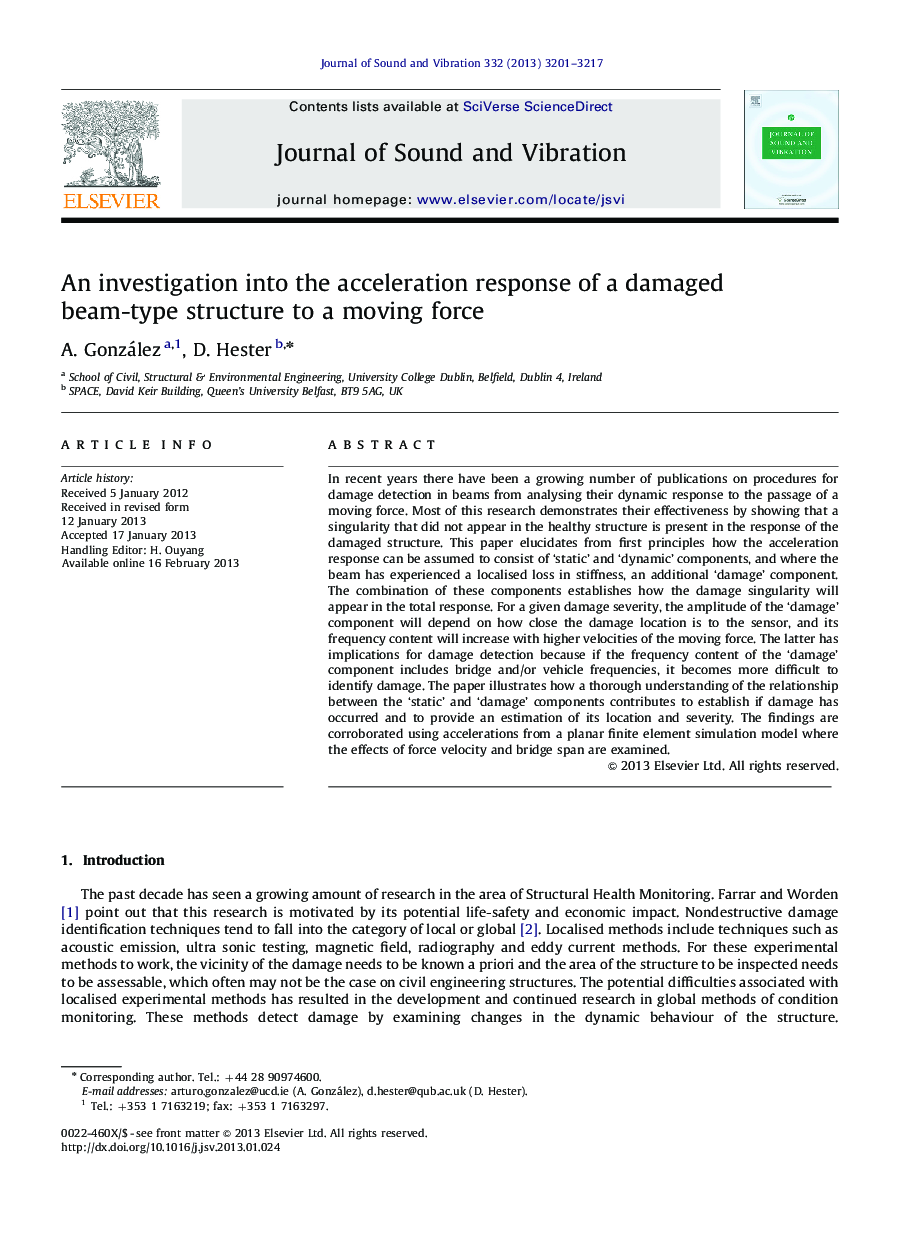| Article ID | Journal | Published Year | Pages | File Type |
|---|---|---|---|---|
| 287825 | Journal of Sound and Vibration | 2013 | 17 Pages |
In recent years there have been a growing number of publications on procedures for damage detection in beams from analysing their dynamic response to the passage of a moving force. Most of this research demonstrates their effectiveness by showing that a singularity that did not appear in the healthy structure is present in the response of the damaged structure. This paper elucidates from first principles how the acceleration response can be assumed to consist of ‘static’ and ‘dynamic’ components, and where the beam has experienced a localised loss in stiffness, an additional ‘damage’ component. The combination of these components establishes how the damage singularity will appear in the total response. For a given damage severity, the amplitude of the ‘damage’ component will depend on how close the damage location is to the sensor, and its frequency content will increase with higher velocities of the moving force. The latter has implications for damage detection because if the frequency content of the ‘damage’ component includes bridge and/or vehicle frequencies, it becomes more difficult to identify damage. The paper illustrates how a thorough understanding of the relationship between the ‘static’ and ‘damage’ components contributes to establish if damage has occurred and to provide an estimation of its location and severity. The findings are corroborated using accelerations from a planar finite element simulation model where the effects of force velocity and bridge span are examined.
► The response of a simply supported damaged beam to a moving load is examined. ► The total response is divided into ‘static’, ‘dynamic’ and ‘damage’ components. ► The effect of changes in damage, span and load on the components is investigated. ► A technique to separate ‘dynamic’, ‘static’ and ‘damage’ components is proposed. ► The area under ‘damage’ and ‘static’ components can locate and quantify damage.
